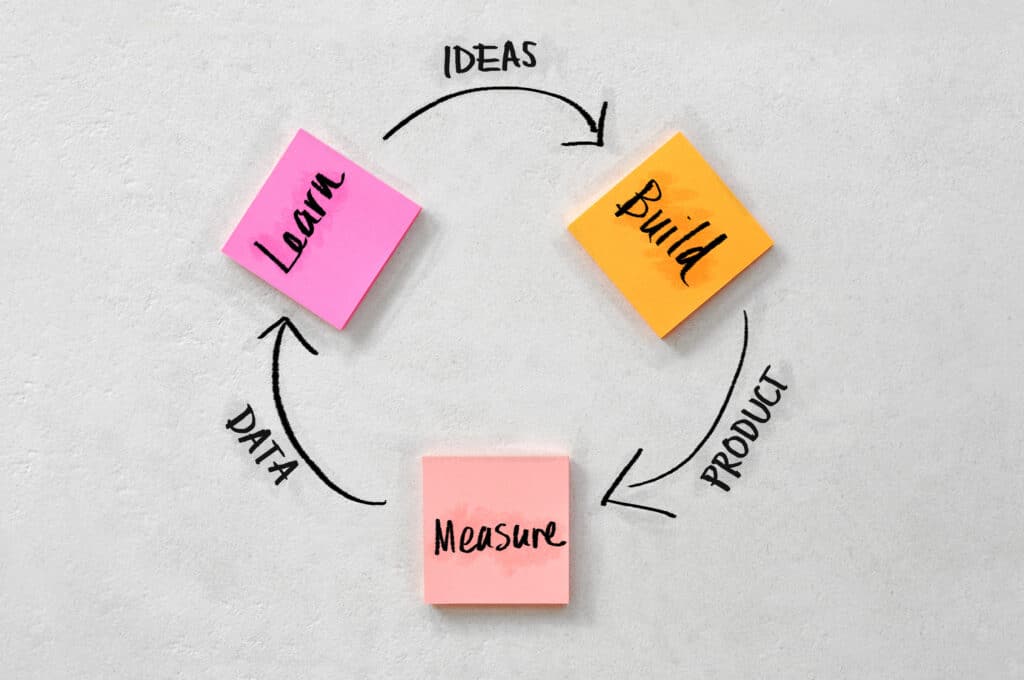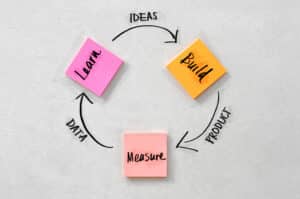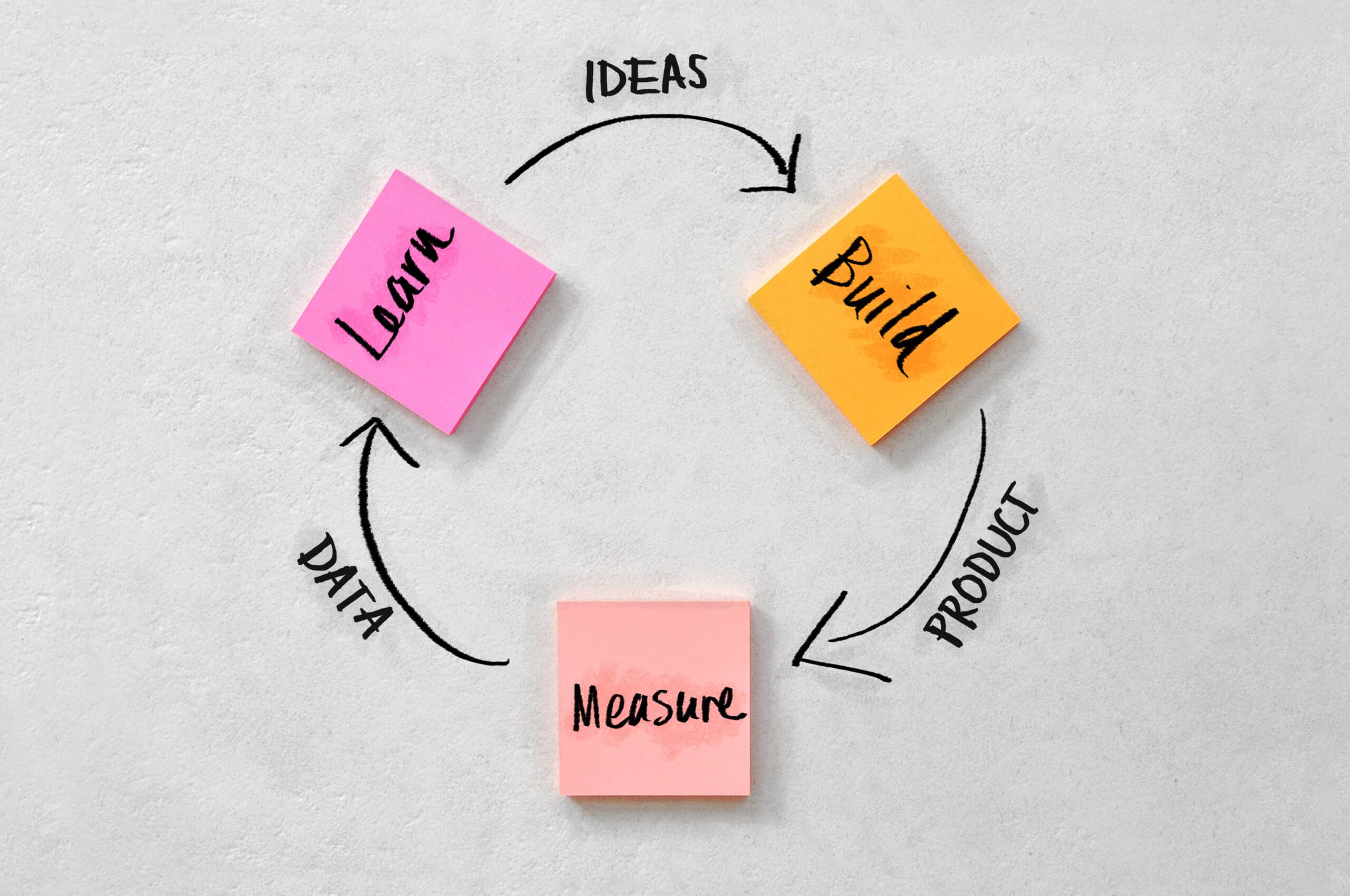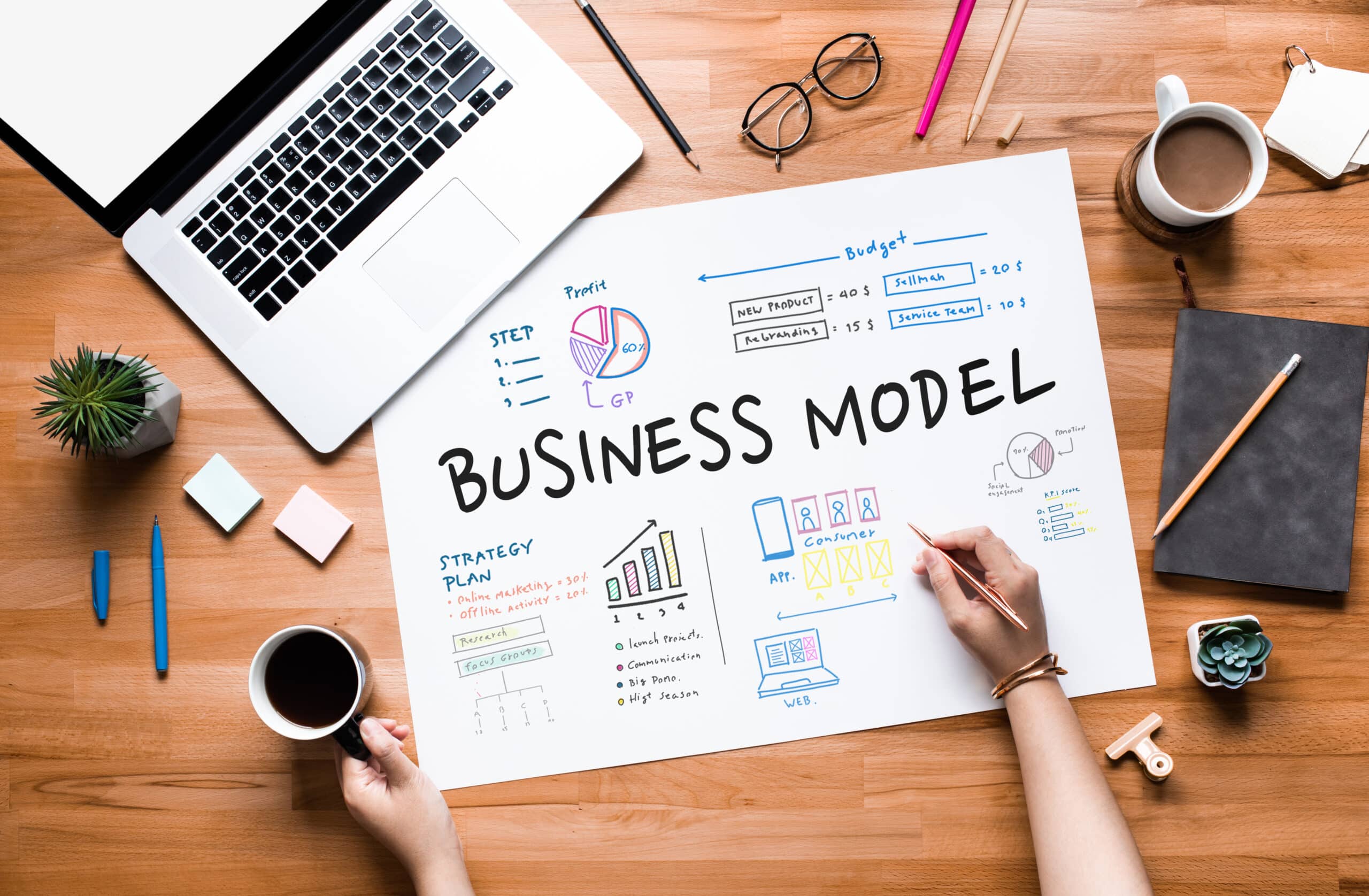The Lean Startup approach is a customer development methodology used by entrepreneurs and businesses to create new products, services, and business models in an efficient manner. By following the Lean Startup principles, entrepreneurs can validate their ideas quickly and save resources on unnecessary features that do not add value to customers. This method also helps reduce the risk associated with introducing new products or services into the market, increasing the chances of success for any venture. This blog post will explore how this innovative approach can help entrepreneurs build successful startups.
Summary
– The Lean Startup approach is an efficient customer development methodology used by entrepreneurs and businesses to create new products, services, and business models.
– This method helps reduce the risk associated with introducing new products or services into the market and can help increase the chances of success for any venture.
– By using this approach, entrepreneurs can focus their resources on creating and testing the minimum viable product (MVP) as quickly as possible so they can learn and make adjustments in real-time.
What Is The Lean Startup Approach?
The Lean Startup model is a way that entrepreneurs use to make new products and services. It helps to save time and money when creating something new. Over the past few years, it has gained momentum as a startup owner’s manual. The Lean Startup model helps you test your idea quickly so you can figure out whether it will work. This approach can help save resources on unnecessary features and increase your business’s chance of success.
When using the Lean Startup model, entrepreneurs can quickly validate their ideas by collecting customer feedback and testing out different versions of their products. This way, entrepreneurs can get useful data that helps them refine their products and services for better results.
The Lean Startup methodology is invaluable for entrepreneurs and businesses looking to improve existing business models. Using the Lean Startup method is not limited to startups but also helps reduce risks associated with creating new products or services. By understanding customers, entrepreneurs can launch relevant and valuable products for their target market. Instead of spending months or years building something without knowing if it will be successful, entrepreneurs can get feedback from customers in a shorter period.
The Lean Startup model helps entrepreneurs move quickly and iterate more efficiently when creating new products or services. It offers an effective way to validate ideas and reduce risks associated with launching something new. Using this approach, and entrepreneurs can save resources, create products their customers will value, and increase their chances of success.
What Does Lean Manufacturing Got To Do With It?
The Lean Start up methodology was inspired by the principles of Toyota’s famous lean manufacturing model, commonly known as the Toyota Production System. The core tenet of this system is to focus on eliminating waste and maximising efficiency to create high-quality products while minimising cost and time. In other words, it encourages companies to streamline their processes and use resources better.
Lean Startup Principles – Where to Begin
The Lean Startup Methodology starts with understanding your customer’s needs. Once you understand their problems and needs, you can create solutions that will best meet their expectations. This helps you avoid wasting time and money on features that won’t help your customers.
The Five Whys
The investigative development method known as the five whys is an essential component of the Lean Startup business model. This technique can help entrepreneurs and businesses uncover the root causes of problems, increase the efficiency of their product development process, and identify the best solutions for their customers.
The concept of the five whys involves asking a series of why questions to understand the problem better. This helps entrepreneurs understand their customers’ needs and use that information to create products or services that fulfil those needs.
An example of the five whys investigative method could help a business understand why its customer satisfaction rating is low. First, they would ask, “Why are our customer satisfaction ratings low?” The answer to that question might uncover that customers are unhappy because they are not getting timely responses to their inquiries.
The next question would be, “Why aren’t we responding to customer inquiries promptly?” This could uncover that the team is not adequately trained in handling customer requests or is overwhelmed with too many requests. Knowing this, the business can focus on providing better training and hiring more staff to respond to customer inquiries.
Customer Validation
Next, getting feedback from your potential customers before investing resources in building your product is important. Doing market research and user testing can help you get an initial idea of what features customers are looking for, allowing you to focus on the features that will benefit them.
Test The Final Product
Finally, it’s important to test the product before launching it. This allows you to find any early bugs or issues, so they can be fixed before the product is released. Testing also helps you get more customer feedback, so you can make sure your product meets their needs.
Minimum Viable Product
A Minimum Viable Product (MVP) is used in Lean Startups to effectively test customer feedback, validate the business idea, and reduce risk before investing too much time and resources into a product or service. It is the most basic version of a product or service that contains only the features essential for customer discovery and feedback. MVPs test whether a concept is viable and can quickly be iterated with customer feedback.
When testing with a minimum viable product, the data obtained can be precious for refining products or services and understanding customer needs. With this data, entrepreneurs can identify what features their customers are looking for and which ones they do not need. This helps them to save resources on unnecessary features that do not add value to customers.
Actionable Metrics
Lean startups focus on financial reporting metrics such as customer acquisition cost, lifetime customer value, and customer churn rate to measure the success of their products and services. Customer acquisition cost is the money spent to acquire a new customer. This metric helps entrepreneurs determine how effective their marketing strategies are and how they can improve them.
Lifetime customer value is the total amount of money a customer will spend throughout their relationship with the business. This can help enterprises to assess the overall value of a customer and how profitable they are.
Customer churn rate is the percentage of customers who do not continue using a product or service after trying it out. Measuring this metric allows businesses to identify areas needing improvement to retain more customers.
Advantages of Using the Lean Startup Methodology
The Lean Startup Methodology is helpful when making new products & services:
– It helps save time and money when creating something new.
– You can quickly test your idea to see if it will work.
– You can save resources by not using features that are not needed.
– Get feedback from customers in a shorter period.
– Helps reduce risks when launching something new.
– Move quickly and iterate efficiently when creating products or services.
– Create products that customers will value and increase the chances of success.
Lean Startup Vs Business Plan
The Lean Startup approach is a popular customer development methodology used by entrepreneurs and businesses to create new products, services, and business models in an efficient manner. On the other hand, a business plan is an essential document that outlines an organisation or venture’s goals, strategies, and objectives. While both these approaches have advantages, they can also be used together. By combining the Lean Startup model with a business plan, entrepreneurs can validate their ideas quickly while still having a long-term vision and focus for their venture.
The Lean Startup approach has become an essential tool for many successful entrepreneurs. It helps them create relevant products for their customers and reduces the risks associated with introducing new products and services into the market. By combining this approach with a well-crafted business plan, entrepreneurs can increase their chances of success for their startup even further.
The Lean Startup Methodology is all about vision and creativity. It helps entrepreneurs quickly validate their ideas by collecting customer feedback and testing out different versions of their products. Alternatively, a business plan is more about execution and how the business will operate.
Both of these approaches have their own advantages that can help entrepreneurs quickly and efficiently create something new. By combining these two approaches, entrepreneurs can save time, and resources, create products their customers will value, and increase their chances of success.
How To Use The Lean Startup Methods – The Business Model Canvas
A business model canvas is a tool that entrepreneurs can use to quickly map out the components of a business to validate their ideas. It is based on the Lean Startup methodology and helps entrepreneurs visualise and assess their business model and identify potential problems and areas for improvement. The canvas consists of nine building blocks, each allowing entrepreneurs to determine how their businesses will generate value and revenue and how they will operate and deliver customer benefits.
The Nine Building Blocks Include:
1. Customer Segments
2. Value Propositions
3. Channels
4. Customer Relationships (including customer acquisition)
5. Revenue Streams
6. Key Resources
7. Key Activities
8. Key Partnerships
9. Cost Structure
By creating a business model canvas, entrepreneurs can quickly test different versions of their product or service before launching it into the market. This allows them to identify potential issues early on, iterate efficiently, and create something their customers will value. It also helps them save time and resources by not investing in features or components that are not essential to the business’s success.
How to Validate Your Ideas with the Lean Startup Approach
To validate your ideas with Lean Startup, here are a few steps you can take:
1. Identify the problem – Start by researching and understanding the problems people are facing in your target market.
2. Create a solution – Develop an innovative solution to the identified problem.
3. Test your idea – Use customer feedback and testing techniques to validate your solution.
4. Launch your product – Utilise the Lean Startup approach to launch your product into the market quickly.
5. Iterate – Monitor customer feedback and adjust your solutions accordingly.
Strategies for Saving Resources and Reducing Risk with the Lean Startup Methodology
Strategies for Saving Resources and Reducing Risk with the Lean Startup Methodology include embracing experimentation and focusing on customer feedback. Embracing experimentation helps entrepreneurs reduce the risk of launching something new by testing different versions of their products or services. This enables them to identify the most valuable features to customers and focus their resources on them. Customer feedback is also critical to the Lean Startup process, as it helps entrepreneurs identify customer needs and develop products relevant to their target market.
Examples of Successful Startups Who Used the Lean Startup Methodology
Examples of successful startups that have embraced the Lean Startup methodology to create products and services that customers value include Slack, Uber, and Airbnb.
Slack
Slack is a cloud-based collaboration platform that provides real-time messaging and file sharing services. The company used the Lean Startup approach to quickly test different versions of its product before launching it into the market.
When the team at Slack used the Lean Startup methodology, they identified a problem in how people communicate and collaborate online. They realised existing messaging solutions lacked features and usability, so they created a cloud-based collaboration platform with real-time messaging and file sharing capabilities.
To test their idea and validate it with customers, the team at Slack used customer feedback and experimentation. They then launched their product into the market with a few key features that customers valued and have continued to iterate on it over time.
Uber
Uber is another example of a successful startup that used the Lean Startup approach to quickly launch its product into the market. The company identified a problem in how people book and pay for taxi services, so they created a mobile app that allowed users to order and pay for rides quickly.
The Uber team used customer feedback and experimentation to test their product to identify which features were most valuable to customers. They then launched their product with these critical features and have continued to iterate on it.
Airbnb
Airbnb is another successful startup using the Lean Startup approach to launch its product into the market quickly. The company identified a problem with expensive and inconvenient hotel stays, so they created an online platform that allowed users to book private homes for short-term rental.
Airbnb used the Lean Startup methodology to quickly test different versions of their product before launching it into the market. To validate their idea and identify the best business model, they began by trying the concept of private home rentals with a small group of customers in San Francisco. By gathering customer feedback and conducting experiments, they could refine their product and launch it into the market with a few key features that customers value.
The Benefits of Utilising a Customer Development Mindset When Starting a Business or Product
Having a Lean Startup mindset when starting a business can save valuable time and resources while increasing the chances of success. By understanding customers’ needs, testing ideas early on, and getting feedback from potential customers, you can create a product or service that will truly meet their needs. Doing this helps you avoid wasting resources on features that won’t help your customers, making it more likely that your business will be successful.
Tips for Maximising Your Chances of Success With the Lean Startup Methodology
– Set clear objectives and a timeline for launching your product or service
– Research the competition to understand their approach and identify areas where you can provide more value than them.
– Utilise customer development methods, such as A/B testing, user interviews, and surveys, to get feedback from potential customers on your idea.
– Monitor critical metrics to track the progress of your product in the market.
– Use agile development techniques to quickly respond to customer feedback by implementing changes rapidly.
– Iterate frequently on small elements of your product or service instead of making significant changes all at once.
– Focus on creating a minimum viable product (MVP) that can be tested and tweaked over time based on customer feedback.
– Leverage data analytics tools and techniques such as predictive modelling or segmentation analysis to gain insights about what’s working well for your business model & what needs improvement.
Conclusion
By leveraging the Lean Startup methodology, entrepreneurs and businesses can test their ideas quickly and efficiently. By gathering customer feedback early in the process and using agile development techniques to respond to changes rapidly, companies can create products or services that better meet customer needs while avoiding wasting resources on unnecessary features. These principles have proven successful for many startups, such as Slack, Uber, Airbnb and more – so why not give it a try? With careful planning and execution of these Lean Startup methods, you could be well on your way towards creating an innovative product or service with higher chances of success!
Let’s Get Started
If you’re an entrepreneur or business looking to bring a new and innovative product or service to the market, then Lean Startup is the way to go. But it can be challenging to get started, especially if you are unfamiliar with this methodology. That’s why we are here to help!
We specialise in helping entrepreneurs and businesses use the Lean Startup methodology to create successful products and services. Contact us today to learn more about how we can help you make your ideas a reality!
Additional Resources:
If you’re interested in learning more about the Lean Startup methodology, here are some resources that may be helpful:
– The Lean Startup by Eric Ries
– Lean Analytics by Alistair Croll and Benjamin Yoskovitz
– Lean UX by Jeff Gothelf and Josh Seiden
– The Lean Product Playbook by Dan Olsen
– Hacking Growth: How Today’s Fastest Growing Companies Drive Breakout Success by Sean Ellis and Morgan Brown.
You can also join online forums or attend local events to gain more insight from experienced entrepreneurs who have implemented Lean Startup principles into their businesses.
The Lean Startup journey doesn’t end here – with the proper guidance and a few iterations, you can take your business to new heights! Contact us today for more information about how we can help you get started. We look forward to hearing from you soon!
FAQ
Q: What is the Lean Startup Methodology?
A: The Lean Startup methodology is a customer-centric approach used by startups and businesses to develop and launch new products or services quickly, efficiently, and with lower risk. It involves testing ideas early in the process, gathering customer feedback, and using agile development techniques to iterate on changes quickly.
Q: What are the benefits of using this methodology?
A: The Lean Startup methodology helps you save time and resources while increasing your chances of success. By understanding customer needs and testing ideas early on, you can avoid wasting resources on features that won’t help your customers. Plus, you can gain key insights about what works well for your business model and what needs improvement by utilising data analytics tools and techniques.
Q: What services do you offer?
A: We specialise in helping entrepreneurs and businesses use the Lean Startup methodology to create successful products and services. Contact us today to learn more about how we can help you make your ideas a reality!























